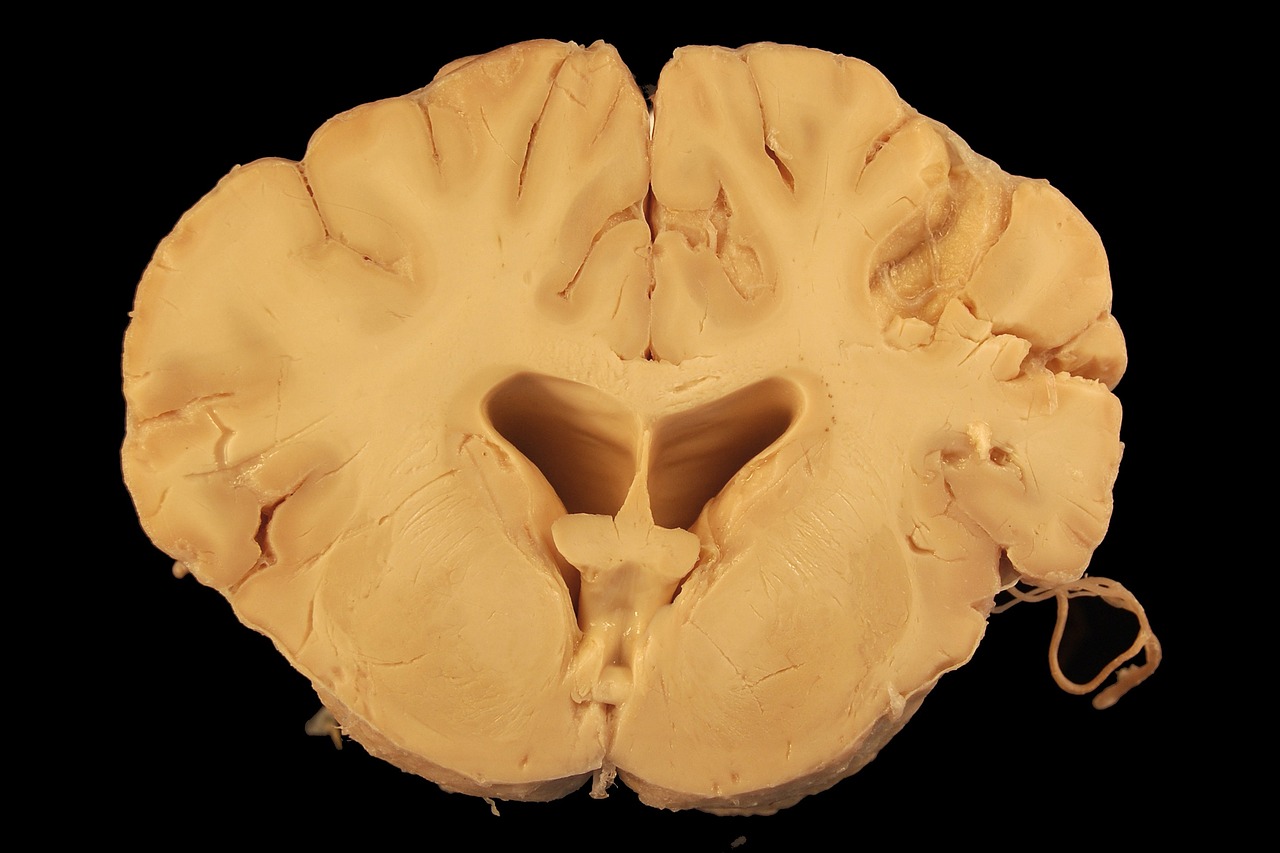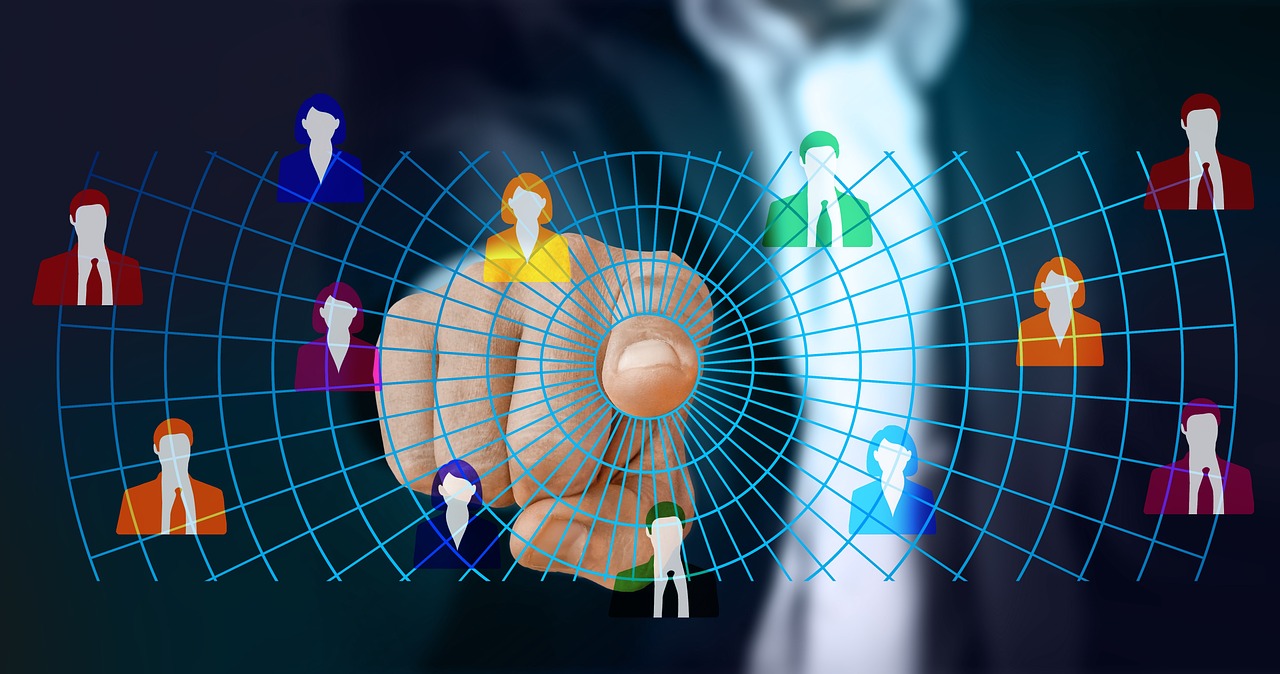Could Mind Uploading Become a Reality?
Imagine a world where your thoughts, memories, and personality could be transferred into a digital format, allowing you to exist beyond the physical limitations of your body. This concept, known as mind uploading, has captured the imagination of scientists, futurists, and the general public alike. But could this fascinating idea actually become a reality? To answer that question, we need to explore the intricate tapestry of neuroscience, technology, and ethics that surrounds this ambitious goal.
The notion of mind uploading isn’t merely science fiction; it’s rooted in the advancements of neuroscience and artificial intelligence. As we delve deeper into the workings of the human brain, we uncover layers of complexity that challenge our understanding of consciousness. At its core, mind uploading involves creating a detailed map of the brain's structure and function, effectively replicating the unique patterns of neural connections that define our individual experiences.
As we stand on the brink of a technological revolution, recent breakthroughs in fields such as neuroimaging and artificial intelligence have brought us closer to realizing this once far-fetched dream. Imagine being able to scan the brain with precision, capturing every synapse and neurotransmitter interaction. This could pave the way for a future where your consciousness could be saved and even transferred to a new medium. However, the implications of such technology extend far beyond mere curiosity; they touch on fundamental questions about what it means to be human.
In this article, we will explore the scientific principles behind mind uploading, the current technological advances that make it feasible, and the ethical considerations that arise from the prospect of digitally preserving human consciousness. We will also analyze the potential societal impacts, including how our relationships and employment structures could evolve in this new digital landscape. So, buckle up as we embark on this thought-provoking journey into the future of consciousness!
Understanding the scientific principles that underpin mind uploading is crucial. This section delves into neuroscience, brain mapping, and the computational models that aim to replicate human consciousness digitally.
Recent advancements in technology have brought us closer to mind uploading. This section highlights breakthroughs in AI, neuroimaging, and data processing that contribute to the feasibility of transferring human consciousness.
Neuroimaging techniques like fMRI and EEG play a vital role in understanding brain activity. This subsection discusses how these methods can aid in mapping the human brain for potential mind uploading.
Despite their usefulness, neuroimaging techniques face significant challenges. This part examines limitations such as resolution, interpretation of data, and the complexity of neural networks.
Future advancements in neuroimaging technology could enhance our understanding of the brain. This section speculates on innovations that may improve accuracy and detail in brain mapping for mind uploading.
Artificial intelligence is pivotal in simulating human thought processes. This subsection explores how AI can be utilized to model consciousness and facilitate the mind uploading process.
The prospect of mind uploading raises numerous ethical questions. This section discusses issues related to identity, consent, and the implications of potentially living in a digital form.
What happens to personal identity in the context of mind uploading? This subsection examines philosophical perspectives on consciousness and individuality in a digital realm.
Consent is a critical issue in mind uploading. This part explores who owns the digital consciousness and the ethical implications of consent in the uploading process.
If mind uploading becomes a reality, its effects on society could be profound. This section analyzes potential changes in relationships, employment, and social structures resulting from digital consciousness.
Mind uploading could redefine human relationships. This subsection discusses how digital immortality might affect interpersonal connections and the concept of love and companionship.
The implications for employment could be significant. This part explores how mind uploading might alter job markets, workforce dynamics, and economic structures in a digitized future.
- What is mind uploading?
Mind uploading is the hypothetical process of scanning a human brain and transferring its state to a digital medium. - Is mind uploading possible today?
While significant advancements have been made, true mind uploading remains a concept of the future. - What are the ethical implications?
Mind uploading raises questions about identity, consent, and the ownership of digital consciousness. - How could society change if mind uploading becomes possible?
It could redefine relationships, alter job markets, and challenge our understanding of life and death.

The Science Behind Mind Uploading
Understanding the scientific principles that underpin mind uploading is crucial for grasping its potential and limitations. At its core, mind uploading involves the intricate mapping of the human brain, aiming to replicate the complex web of neural connections that constitute our thoughts, memories, and consciousness. Neuroscience plays a pivotal role in this endeavor, as researchers strive to decode the brain's electrical and chemical signals, which are the foundation of our cognitive processes.
One of the primary challenges in mind uploading is accurately mapping the human brain. The brain consists of approximately 86 billion neurons, each forming thousands of synapses with other neurons, creating an incredibly intricate network. To achieve a successful upload, scientists must develop advanced techniques that can capture this complexity. This requires not only understanding the structure of individual neurons but also how they communicate and work together in networks.
To facilitate this, researchers are utilizing brain mapping techniques that employ various neuroimaging methods. For instance, techniques such as functional Magnetic Resonance Imaging (fMRI) and Electroencephalography (EEG) allow scientists to visualize brain activity and understand how different areas of the brain respond during various tasks. These tools provide valuable insights into the brain's functionality and are essential for creating computational models that simulate human cognition.
However, the journey towards mind uploading is fraught with challenges. The limitations of current neuroimaging technologies pose significant hurdles. For example, while fMRI can provide a glimpse into brain activity, its spatial resolution is limited, meaning it cannot capture the activity of individual neurons with high precision. Similarly, EEG, which measures electrical activity, has a temporal resolution that can miss rapid brain events. These challenges necessitate the development of more sophisticated imaging techniques that can provide a clearer and more detailed understanding of the brain's architecture.
Despite these challenges, the future of neuroimaging looks promising. Innovations in technology could pave the way for breakthroughs that enhance our ability to map the human brain accurately. For instance, advancements in optogenetics and high-resolution imaging could allow researchers to manipulate and visualize neural circuits in real-time, providing unprecedented insights into the workings of the brain. As these technologies evolve, they may bring us closer to the goal of mind uploading.
In summary, the science behind mind uploading is a fascinating intersection of neuroscience, technology, and philosophy. While we are still in the early stages of understanding how to digitize consciousness, the progress made in brain mapping and neuroimaging is laying the groundwork for what could be a revolutionary leap in human existence. As we continue to explore these scientific frontiers, we must remain mindful of the ethical implications and societal impacts that such advancements may bring.
- What is mind uploading? - Mind uploading is the theoretical process of transferring a human mind to a digital medium, allowing for the preservation of consciousness.
- How does neuroimaging contribute to mind uploading? - Neuroimaging techniques help scientists visualize brain activity and understand neural connections, which are crucial for creating accurate digital representations of the mind.
- What are the main challenges of mind uploading? - Key challenges include the complexity of the brain's structure, limitations of current neuroimaging technologies, and ethical considerations surrounding identity and consent.
- What future advancements might aid in mind uploading? - Innovations in imaging technologies, artificial intelligence, and neurobiology could enhance our understanding of the brain and improve the feasibility of mind uploading.

Current Technological Advances
In recent years, we have witnessed a remarkable surge in technological innovations that inch us closer to the dream of mind uploading. This concept, once relegated to the realms of science fiction, is now being seriously explored by scientists and technologists alike. At the heart of this transformation are several key advancements that have revolutionized our understanding of the human brain and artificial intelligence.
One of the most exciting developments has been in the field of artificial intelligence (AI). AI's ability to analyze vast amounts of data quickly and efficiently has opened new doors for simulating human thought processes. Imagine a computer program that can mimic your decision-making or even your emotional responses! This is not just a fantasy; researchers are actively working on algorithms that could replicate the intricate patterns of human thought. These AI models are crucial for the potential of mind uploading, as they help create a digital version of consciousness.
Another significant leap forward has come from advancements in neuroimaging technologies. Techniques such as functional Magnetic Resonance Imaging (fMRI) and Electroencephalography (EEG) have improved dramatically, allowing scientists to observe brain activity in real-time. These tools are essential for mapping the complex networks of neurons that form the basis of our thoughts, memories, and emotions. They provide a window into the brain's inner workings, helping researchers to understand how different areas of the brain contribute to our consciousness.
Neuroimaging techniques like fMRI and EEG are pivotal in the quest for mind uploading. fMRI, for instance, measures brain activity by detecting changes in blood flow, offering insights into which areas of the brain are active during various tasks. EEG, on the other hand, captures electrical activity along the scalp and can reveal how the brain responds to stimuli in real-time. Together, these techniques are laying the groundwork for a comprehensive brain map that could eventually lead to the successful uploading of human consciousness.
However, despite these advancements, neuroimaging techniques are not without their challenges. For instance, the resolution of these imaging methods can be limiting. While fMRI provides a good overview of brain activity, it lacks the precision needed to capture the intricate details of individual neuron activity. Moreover, interpreting the data from these scans is complex and often subjective. The brain is a highly intricate network, and understanding how various neural connections contribute to consciousness remains a daunting task.
Looking ahead, the future of neuroimaging technology is promising. Innovations such as optogenetics, which involves using light to control neurons, and advanced machine learning algorithms that can analyze brain data more effectively, could significantly enhance our understanding of the brain. These improvements may lead to more accurate and detailed brain maps, bringing us closer to the reality of mind uploading. Imagine a world where we can not only understand our brain's functions better but also replicate them digitally!
In summary, the current technological advances in AI and neuroimaging are paving the way for the possibility of mind uploading. As we continue to unravel the mysteries of the brain and enhance our computational models, the dream of digitizing human consciousness may not be as far-fetched as it once seemed. The implications of such advancements are profound, and they invite us to ponder the future of humanity in a world where our minds could potentially live on forever.
- What is mind uploading? Mind uploading is the hypothetical process of transferring a human mind to a digital medium, allowing consciousness to exist in a virtual environment.
- Is mind uploading scientifically possible? While significant advancements in neuroscience and AI are being made, mind uploading remains a theoretical concept and faces numerous scientific and ethical challenges.
- What ethical concerns surround mind uploading? Ethical considerations include issues of identity, consent, and the implications of living in a digital form, raising questions about what it means to be human.
- How might society change if mind uploading becomes a reality? Potential societal impacts include changes in relationships, employment, and social structures, as digital consciousness could redefine what it means to live and interact.

Neuroimaging Techniques
Neuroimaging techniques are at the forefront of understanding the intricate workings of the human brain. By utilizing advanced technology, scientists can visualize brain activity in real-time, offering a glimpse into the complex networks that make up our thoughts, memories, and emotions. Two of the most prominent techniques in this field are Functional Magnetic Resonance Imaging (fMRI) and Electroencephalography (EEG). Each of these methods has its unique strengths and weaknesses, making them invaluable tools in the quest for mind uploading.
fMRI is particularly remarkable because it measures brain activity by detecting changes in blood flow. When a specific area of the brain is active, it requires more oxygen, and fMRI can capture these changes with stunning detail. This technique allows researchers to map brain regions associated with various cognitive functions, such as decision-making and emotional responses. However, while fMRI provides excellent spatial resolution, it falls short in capturing the rapid dynamics of brain activity.
On the other hand, EEG records electrical activity in the brain through electrodes placed on the scalp. This method excels in its temporal resolution, allowing scientists to observe brain activity on a millisecond timescale. EEG is particularly useful for studying the brain's response to stimuli, making it invaluable in understanding how we process information. Yet, its spatial resolution is limited, making it challenging to pinpoint the exact location of brain activity.
Both techniques are crucial in the context of mind uploading, as they can help researchers develop comprehensive brain maps necessary for replicating consciousness digitally. By combining the strengths of fMRI and EEG, scientists can create a more holistic view of brain function. Imagine a world where we could integrate the detailed spatial insights from fMRI with the rapid temporal data from EEG; the potential for understanding the brain would skyrocket!
However, it's essential to acknowledge the challenges faced by neuroimaging techniques. For instance, the interpretation of data can be complex, as the brain's activity is not always straightforward. Additionally, the sheer complexity of neural networks presents a significant hurdle. Despite these challenges, ongoing advancements in neuroimaging technology hold promise for the future.
As we look ahead, the future of neuroimaging techniques could be transformative. Innovations such as high-resolution imaging and machine learning algorithms may enhance our ability to map the brain with unprecedented accuracy. These improvements could lead to a deeper understanding of how consciousness arises and how it might be replicated digitally. The journey toward mind uploading is fraught with challenges, but the potential rewards make it a pursuit worth exploring.
- What is mind uploading? Mind uploading is the theoretical process of transferring a person's consciousness into a digital format, allowing for potential immortality and new forms of existence.
- How do neuroimaging techniques contribute to mind uploading? Neuroimaging techniques help researchers understand brain activity and structure, which is essential for creating accurate models of consciousness.
- What are the limitations of fMRI and EEG? fMRI has excellent spatial resolution but poor temporal resolution, while EEG has great temporal resolution but limited spatial resolution.
- What advancements are expected in neuroimaging? Future improvements may include higher resolution imaging and the integration of machine learning to analyze complex brain data more effectively.

Challenges of Neuroimaging
Neuroimaging techniques, while revolutionary in understanding the human brain, face a myriad of challenges that complicate the journey toward mind uploading. One of the primary hurdles is the resolution of current imaging technologies. For instance, traditional methods like fMRI (functional Magnetic Resonance Imaging) and EEG (Electroencephalography) provide a broad overview of brain activity but lack the fine detail needed to capture the intricate workings of individual neurons and their connections. This limitation raises the question: how can we hope to replicate consciousness if we can't even see the full picture of brain activity?
Moreover, the interpretation of data poses another significant challenge. Neuroimaging generates vast amounts of data, but deciphering what this data actually means in terms of thought processes and emotional responses is still a developing field. The complexity of neural networks adds another layer of difficulty; the brain's architecture is not just a simple web of connections but a dynamic, ever-changing tapestry influenced by experiences, emotions, and environmental factors. As researchers strive to map these networks accurately, they often find themselves grappling with the question of whether our current models can truly capture the essence of human consciousness.
In addition to these technical challenges, there are also ethical considerations surrounding neuroimaging. For example, how do we ensure the privacy and consent of individuals whose brains are being studied? As we delve deeper into the mapping of human consciousness, the potential for misuse of neuroimaging data becomes a pressing concern. The implications of accessing someone's thoughts or memories could be profound and troubling, leading to questions about who controls this sensitive information.
Looking ahead, there is hope that future advancements in neuroimaging technology will address these challenges. Innovations such as high-resolution imaging techniques and improved data processing algorithms could enhance our ability to visualize and understand the brain's inner workings. As we develop tools that allow us to capture more detailed images of brain activity, we may inch closer to the elusive goal of mind uploading. However, the journey is fraught with obstacles, and it will require a concerted effort from scientists, ethicists, and technologists alike to navigate these complexities.
- What is mind uploading? Mind uploading is the hypothetical process of scanning a person's brain and transferring their consciousness to a digital medium.
- What are the main challenges of neuroimaging? The main challenges include resolution limitations, data interpretation difficulties, and ethical concerns regarding privacy and consent.
- How might future advancements in neuroimaging help? Future advancements could lead to higher resolution imaging and better data processing, allowing for a more accurate mapping of the brain.
- Are there ethical implications of mind uploading? Yes, ethical implications include questions of identity, consent, and the ownership of digital consciousness.

Future Improvements
As we look toward the horizon of mind uploading, it's essential to consider the that could revolutionize our understanding of the brain and enhance the feasibility of digitizing consciousness. While current neuroimaging techniques like fMRI and EEG provide valuable insights, they are just the tip of the iceberg. Imagine a world where advancements in technology allow us to visualize the brain's intricate networks with unprecedented clarity and accuracy. This could lead to breakthroughs that not only improve our ability to map the brain but also refine our understanding of how consciousness is formed and processed.
One exciting area of potential improvement lies in the development of high-resolution imaging techniques. These next-generation neuroimaging methods could utilize advanced technologies such as optogenetics and magnetoencephalography (MEG) to capture real-time brain activity at a cellular level. By achieving this level of detail, researchers would be able to create more accurate models of neural connections, ultimately paving the way for successful mind uploading.
Moreover, the integration of machine learning algorithms could play a pivotal role in enhancing neuroimaging data interpretation. As AI continues to evolve, it could assist scientists in identifying patterns and correlations within complex brain data that are currently beyond human comprehension. This synergy between AI and neuroimaging could lead to the development of sophisticated computational models that simulate human thought processes with remarkable fidelity.
Additionally, the potential for brain-computer interfaces (BCIs) to evolve into more sophisticated systems could significantly impact the mind uploading process. These interfaces could facilitate direct communication between the brain and external devices, allowing for a seamless transfer of information. Imagine a future where your thoughts could be instantly captured and translated into digital formats, making the uploading process more efficient and less invasive.
In summary, the future of mind uploading is not just a distant dream; it is a rapidly evolving field with numerous avenues for improvement. As we continue to push the boundaries of technology and neuroscience, the possibility of successfully digitizing human consciousness may become a reality sooner than we think. The journey to this future will undoubtedly be filled with challenges, but the potential rewards—understanding the essence of what makes us human—are worth the pursuit.
- What is mind uploading? Mind uploading refers to the theoretical process of transferring a person's consciousness from their biological brain to a digital medium.
- Are we close to achieving mind uploading? While significant advancements in technology and neuroscience are being made, we are still far from achieving full mind uploading.
- What ethical concerns are associated with mind uploading? Ethical concerns include issues of identity, consent, and the implications of living in a digital form.
- How could society change if mind uploading becomes a reality? Potential changes could include shifts in relationships, job markets, and social structures as digital consciousness becomes more common.

Artificial Intelligence's Role
Artificial Intelligence (AI) is not just a buzzword; it’s a transformative force that could redefine our understanding of consciousness and the very fabric of reality. Imagine a world where our thoughts, memories, and personalities could be digitized, allowing us to exist in a virtual realm. Sounds like science fiction, right? But with the rapid advancements in AI, this concept is inching closer to becoming a tangible reality. AI plays a pivotal role in simulating human thought processes, enabling us to model consciousness in ways we never thought possible.
At its core, AI can analyze vast amounts of data, making it an essential tool in the quest for mind uploading. By utilizing machine learning algorithms, AI can identify patterns in brain activity that may correspond to specific thoughts or memories. This capability is crucial when we consider the complexity of human consciousness, which is not merely a collection of memories but a dynamic interplay of emotions, experiences, and cognitive processes. The goal here is to create a digital replica of our minds that truly reflects who we are.
One of the most exciting aspects of AI's involvement in mind uploading is its potential to enhance neuroimaging techniques. Through sophisticated algorithms, AI can improve the accuracy and efficiency of brain scans, allowing scientists to gain deeper insights into the neural correlates of consciousness. For instance, AI could help in decoding the intricate web of neural connections that contribute to our thoughts and feelings. Imagine a future where an AI can read your mind, not in the invasive sense, but as a means to understand the essence of your consciousness.
Furthermore, AI can assist in creating simulations of human thought processes. By analyzing how we respond to various stimuli, AI can develop models that mimic our decision-making and emotional responses. This simulation aspect is vital for mind uploading because it allows for a more nuanced understanding of how our minds work. A detailed model could provide the foundation for replicating consciousness in a digital format, essentially creating a virtual version of ourselves that retains our unique traits and characteristics.
However, it’s essential to recognize that while AI holds immense potential, it also brings forth significant challenges. The accuracy of AI models depends heavily on the quality of the data fed into them. If the data is flawed or biased, the resulting simulations could misrepresent human consciousness. Moreover, ethical considerations arise when we think about the implications of creating digital minds. Who gets to decide what constitutes a “true” representation of consciousness? These questions highlight the need for a multidisciplinary approach that combines neuroscience, ethics, and AI development.
In summary, AI is not just a tool; it’s a partner in our journey toward understanding and potentially replicating consciousness. The intersection of AI and mind uploading opens up a realm of possibilities that could redefine existence as we know it. As we continue to explore this frontier, it’s crucial to remain vigilant about the ethical implications and strive for a future that respects the complexities of human identity.
- What is mind uploading? Mind uploading refers to the theoretical process of transferring a person's consciousness into a digital format, allowing for a virtual existence.
- How does AI contribute to mind uploading? AI helps in analyzing brain data, simulating thought processes, and enhancing neuroimaging techniques, all of which are crucial for understanding and replicating consciousness.
- What are the ethical implications of mind uploading? Ethical concerns include issues of identity, consent, and the ownership of digital consciousness, raising questions about what it means to be human.
- Is mind uploading possible today? While significant advancements have been made, mind uploading remains a theoretical concept and is not yet feasible with current technology.

Ethical Considerations
The concept of mind uploading raises a plethora of ethical questions that demand our attention. As we stand on the brink of technological advancements that could allow us to digitize human consciousness, we must grapple with what this means for our understanding of identity, consent, and the very essence of being human. Imagine a world where you could live forever, not in a physical body, but as a series of 1s and 0s in a digital realm. Sounds captivating, right? But it also leads us to ponder: what happens to our sense of self in such a scenario?
One of the most pressing issues is the question of identity and consciousness. If we upload our minds, are we still the same person we were? Philosophers have long debated the nature of identity. Some argue that consciousness is tied to our physical bodies, while others believe it can exist independently. In a digital form, do we retain our memories, emotions, and personality traits? Or do we become mere simulations, stripped of our humanity? This philosophical conundrum is not just academic; it has real implications for how we view ourselves and our relationships with others.
Another significant ethical concern revolves around consent and ownership. Who owns the digital version of a person’s consciousness? If an individual decides to upload their mind, what happens to their physical body? Is it left behind, or does it remain a part of the equation? Moreover, how do we ensure that consent is informed and voluntary? The potential for exploitation in this realm is alarming. Imagine a scenario where individuals are pressured into uploading their minds for profit or control. This raises questions about autonomy and the moral obligations we have to protect individuals from such coercive practices.
Furthermore, the implications of mind uploading could profoundly impact our societal structures. Consider the possibility of digital immortality. How would this affect our relationships? Would love and companionship still hold the same meaning if we could exist eternally in a digital format? The dynamics of human interaction could shift dramatically, leading to challenges in forming genuine connections. Additionally, the economy might face upheaval as job markets adjust to a workforce that could potentially include digital beings. How do we navigate a world where the line between human and machine becomes increasingly blurred?
In conclusion, the ethical considerations of mind uploading are vast and complex. As we venture into this uncharted territory, it is crucial to engage in ongoing discussions about the implications of such technology. We need to create frameworks that prioritize human dignity, consent, and the preservation of our unique identities. Only through thoughtful consideration can we hope to harness the potential of mind uploading while safeguarding the values that define us as human beings.
- What is mind uploading? Mind uploading is the hypothetical process of transferring a human mind to a digital medium, allowing consciousness to exist in a virtual environment.
- What are the ethical implications of mind uploading? Ethical implications include concerns about identity, consent, ownership of digital consciousness, and the potential societal impacts.
- Could mind uploading change human relationships? Yes, it could redefine relationships, as the concept of love and companionship may evolve in a world where individuals can exist digitally.
- Who owns a digital consciousness? Ownership of a digital consciousness raises complex legal and ethical questions that are yet to be resolved.

Identity and Consciousness
The concept of identity in the context of mind uploading is a fascinating and complex topic that challenges our traditional notions of self. When we think about our identity, we often consider it to be tied to our physical bodies, our memories, and our experiences. But what happens when we start to entertain the idea of transferring our consciousness into a digital format? Does our identity persist, or does it dissolve into the ether of cyberspace?
Philosophically speaking, identity can be viewed through various lenses. Some argue that our consciousness is a continuous stream of experiences that define who we are, while others suggest that our identity is more about the memories and relationships we hold dear. With mind uploading, we face the question of whether a digital copy of our consciousness would truly be 'us' or merely an imitation. Imagine a high-definition photograph of yourself; it may look identical, but it lacks the essence of your lived experience. Can a digital consciousness capture the nuances of human emotion, the warmth of a smile, or the depth of love?
To further explore this, we can categorize the philosophical perspectives on identity in the context of mind uploading into three main viewpoints:
- Continuity of Consciousness: This view posits that if the uploaded consciousness retains the same memories and personality traits, it can be considered the same individual.
- Fragmented Identity: Here, the argument is that uploading creates a new entity, which may share memories but is not the original self, thus leading to a fragmented identity.
- Digital Dualism: This perspective suggests that the digital version of consciousness is a separate entity, raising questions about the original's existence and rights.
As technology advances, we may find ourselves grappling with these questions on a more personal level. For instance, if you were to upload your consciousness and continue to live in a digital realm, would you still feel connected to your physical self? Would your loved ones view you as the same person, or would they see you as an echo of who you once were? These questions become even more poignant when considering the implications of digital immortality. What does it mean to live forever in a digital format? Would we still value the fleeting moments of life, or would they lose their significance in a world where time is no longer a constraint?
Ultimately, the interplay between identity and consciousness in the realm of mind uploading is not just a scientific or technological issue; it is deeply philosophical. As we inch closer to the possibility of digitizing our consciousness, we must reflect on what it means to be human, to have an identity, and how we define ourselves in an increasingly digital world.
- What is mind uploading? Mind uploading is the hypothetical process of transferring a person's consciousness, memories, and personality into a digital format.
- Will my identity remain the same after uploading? This is a subject of philosophical debate; some argue that if your memories and personality are preserved, you remain the same, while others believe you become a new entity.
- What are the ethical implications of mind uploading? Ethical concerns include issues of consent, ownership of digital consciousness, and the potential for identity fragmentation.
- How could mind uploading impact relationships? It may redefine personal connections, as people could interact with both their physical and digital selves, altering the nature of love and companionship.

Consent and Ownership
The concept of mind uploading brings forth a myriad of questions regarding consent and ownership of one's digital consciousness. Imagine a world where your thoughts, memories, and personality traits can be transferred into a digital format—who gets to decide what happens to that data? This is not just a technical issue; it’s a profound ethical dilemma that challenges our understanding of identity and autonomy.
Firstly, let's consider consent. In any medical procedure, consent is paramount, but the stakes are raised significantly when it comes to uploading one's mind. Is it sufficient to obtain consent from a person before they undergo the uploading process, or should there be ongoing consent? What if a person changes their mind after the upload? The implications of such a scenario could be staggering. The digital consciousness could continue to exist, potentially with or without the original individual's approval. This raises the question: does the digital copy have rights, or is it merely a product of the original's mind?
Next, we delve into the question of ownership. Once a mind is uploaded, who owns that digital entity? Is it the individual, the corporation that facilitated the upload, or perhaps the government? This issue becomes even more complex when considering the potential for replication and distribution of digital consciousness. If someone’s consciousness can be copied, does that mean there are multiple owners? The legal frameworks we have today may not be equipped to handle such unprecedented scenarios, leading to potential conflicts and disputes over the ownership of one’s mind.
We can categorize these issues into several key considerations:
- Legal Ownership: Who has the legal right to the uploaded consciousness?
- Ethical Ownership: Should the original person retain some rights over their digital self?
- Potential Exploitation: How do we prevent corporations from exploiting uploaded minds for profit?
As we stand on the brink of this technological revolution, it’s crucial to engage in discussions that address these concerns. Without clear guidelines and ethical standards, the promise of mind uploading could lead to a dystopian future where individuals lose control over their own identities. Society must prioritize creating a framework that not only respects individual autonomy but also safeguards against potential abuses in a world where consciousness can be digitized.
- What is mind uploading? Mind uploading is the theoretical process of transferring a human consciousness to a digital medium.
- Is mind uploading possible today? While significant advancements are being made in neuroscience and AI, mind uploading remains a concept largely in the realm of science fiction.
- What are the ethical implications of mind uploading? Ethical concerns include issues of consent, ownership, identity, and the potential for exploitation of digital consciousness.
- Who owns a digital consciousness? Ownership of a digital consciousness raises complex legal and ethical questions that are yet to be resolved.

Potential Societal Impacts
The concept of mind uploading is not merely a fascinating topic for science fiction; it has the potential to transform our society in ways we can only begin to imagine. If the ability to digitize consciousness becomes a reality, the implications could ripple through every aspect of human life. Imagine a world where people can choose to live indefinitely in a digital format, free from the constraints of their biological bodies. What would that mean for our understanding of life, death, and everything in between?
One of the most profound changes could be in our relationships. Digital immortality might lead to a redefinition of what it means to connect with others. Consider how we currently value human interactions; they are deeply tied to our physical presence. However, if we could upload our minds, would love and companionship still hold the same weight? Would we form bonds with digital versions of people, or would those relationships lack the emotional depth we associate with human contact? The potential for loneliness in a world where many choose to exist digitally is an intriguing paradox.
Furthermore, the implications for employment and the economy could be staggering. If individuals can live indefinitely in a digital realm, how would this affect job markets? Would there be a divide between those who choose to upload their consciousness and those who remain in their biological forms? This might create a new class system based on one’s choice of existence. The traditional notions of retirement, aging, and productivity could be turned on their head, leading to significant shifts in workforce dynamics.
To illustrate the potential changes, consider the following table that outlines possible societal shifts:
| Aspect | Current State | Potential Shift with Mind Uploading |
|---|---|---|
| Relationships | Physical presence is key | Digital connections may replace physical ones |
| Employment | Finite lifespan influences career | Indefinite life could change job dynamics |
| Identity | Defined by physical existence | Identity may become fluid and digital |
| Social Structures | Hierarchical based on age and experience | New hierarchies based on digital existence |
Moreover, the societal structure could undergo a transformation. With the potential for people to live in a digital format, we might see a shift in governance, legal systems, and societal norms. Would laws need to adapt to account for digital beings? How do we handle issues like digital property rights, or the ethical treatment of uploaded consciousness? These questions could lead to a re-evaluation of our current legal frameworks and societal values.
In summary, the societal impacts of mind uploading could be extensive and multifaceted. As we stand on the brink of technological advancements that could make this a reality, it’s crucial to consider not just the scientific and technical aspects but also the profound changes it could bring to our very essence as human beings. Are we ready to embrace such a future, or would we prefer to hold on to the tangible connections that define our current lives?
- What is mind uploading? Mind uploading refers to the hypothetical process of scanning a human brain and transferring its state to a computer, allowing for a digital form of consciousness.
- Will mind uploading make me immortal? While it may allow for extended existence in a digital format, it raises questions about the nature of identity and consciousness.
- What are the ethical implications of mind uploading? Ethical concerns include issues of consent, ownership of digital consciousness, and the impact on personal identity.
- How could mind uploading affect relationships? It may redefine human connections, leading to new forms of companionship and potentially increasing feelings of isolation.
- What changes might occur in the job market? The job market could see shifts in workforce dynamics, with potential divides between those who upload their consciousness and those who do not.

Changing Relationships
Imagine a world where love and companionship transcend the boundaries of flesh and blood. With the advent of mind uploading, this futuristic scenario could become a reality, fundamentally altering the way we perceive and engage in relationships. What if you could carry your consciousness into a digital realm, where time and space no longer dictate your connections? This concept is not just a sci-fi fantasy; it’s a potential future that could redefine the essence of human interaction.
As we contemplate the implications of mind uploading, we must consider how it would affect our emotional ties. Would digital immortality make us more connected or more isolated? The ability to upload one's mind could lead to a scenario where individuals choose to exist in a virtual environment, potentially leading to a decline in physical interactions. For instance, if people can live forever in a digital space, would they still value the fleeting nature of human relationships? The dynamics of love and friendship could shift dramatically, as the urgency and intensity of these bonds might diminish in a world where time is no longer a constraint.
Moreover, the concept of companionship could take on new forms. Consider a scenario where people can interact with the uploaded consciousness of loved ones. Would these digital beings retain the same emotional depth as their physical counterparts? It's possible that the essence of a person could be preserved in the digital realm, but the nuances of human connection—like the warmth of a hug or the sound of laughter—might be lost in translation. Relationships could become transactional, relying on programmed responses rather than genuine emotional engagement.
In addition, the idea of polyamory could evolve in unexpected ways. With multiple uploaded consciousnesses coexisting in a shared digital space, the definitions of love and partnership might expand. People could form connections with various digital personas, leading to complex emotional networks that challenge traditional notions of exclusivity. Would this lead to a richer tapestry of relationships, or would it create chaos in emotional landscapes? The answers to these questions remain uncertain as we navigate this uncharted territory.
Furthermore, the concept of grief and loss would undergo a transformation. If we could upload our loved ones' minds, would we ever truly let go? The emotional weight of losing someone could be alleviated by the possibility of their consciousness existing in a digital format. However, this raises profound questions about the nature of death and the grieving process. How would we cope with the loss of a physical presence while still having access to a digital echo of that person? The lines between life and death could blur, leading to new societal norms surrounding mourning and remembrance.
In conclusion, the potential for mind uploading to change relationships is both thrilling and daunting. As we stand on the precipice of this technological revolution, we must grapple with the profound implications it holds for our emotional lives. Will we embrace a future where love knows no bounds, or will we find ourselves longing for the irreplaceable connections that define our humanity?
- What is mind uploading? Mind uploading is the hypothetical process of scanning a human brain and transferring its state to a computer system, effectively allowing consciousness to exist in a digital format.
- How might mind uploading affect human relationships? It could redefine emotional connections, alter the nature of companionship, and change how we experience love and loss.
- Are there ethical concerns surrounding mind uploading? Yes, issues related to identity, consent, and the ownership of digital consciousness raise significant ethical questions.
- What are the potential societal impacts of mind uploading? It could lead to changes in employment, social structures, and interpersonal relationships, fundamentally altering how society functions.

Employment and Economy
The idea of mind uploading isn't just a sci-fi fantasy; it could fundamentally reshape our employment landscape and economic structures. Imagine a world where individuals can live indefinitely in a digital form, free from the constraints of biological aging. This concept raises numerous questions about how we work, what jobs will exist, and how economies will adapt. If our consciousness can be transferred to a digital medium, we may find ourselves in a situation where traditional notions of retirement and aging become obsolete.
One of the most intriguing possibilities is the emergence of entirely new job sectors focused on managing, maintaining, and enhancing digital consciousness. For instance, consider the following potential job roles that could arise:
- Digital Consciousness Curators: Specialists who help individuals navigate their digital lives, offering support in maintaining their uploaded consciousness.
- Virtual Environment Designers: Creators who design immersive digital experiences tailored to the needs and preferences of uploaded minds.
- Ethics Compliance Officers: Professionals tasked with ensuring that the rights and identities of digital beings are respected and upheld.
Furthermore, the traditional job market could undergo a significant transformation. As people transition into digital beings, the demand for physical labor may diminish, leading to a potential surplus of human workers in roles that require physical presence. This shift could exacerbate existing economic disparities, as those who can afford mind uploading might gain access to a new tier of existence, while others remain tethered to the limitations of their biological forms.
Additionally, the concept of digital immortality could lead to changes in how we perceive work-life balance. With the potential to exist in a digital realm indefinitely, the motivation for work may shift dramatically. Will people still seek employment for financial reasons, or will they pursue work for personal fulfillment? This question could redefine our understanding of productivity and purpose in life.
Moreover, the implications for the economy could be profound. Consider a potential scenario where a significant portion of the population exists digitally. Would traditional economic models, which rely on consumption and production, still apply? We might see a shift toward a more sustainable economy, where the focus is on enhancing quality of life rather than mere survival. The digital economy could thrive on services and experiences rather than physical goods, leading to a reimagining of value and wealth.
In summary, the advent of mind uploading could create a ripple effect throughout the employment and economic landscape. While it presents exciting opportunities, it also poses significant challenges that society must address. As we stand on the brink of this technological revolution, it’s essential to consider how we will adapt and thrive in a world where consciousness can transcend the limitations of our physical bodies.
- What is mind uploading? Mind uploading refers to the theoretical process of transferring a person's consciousness to a digital medium, allowing them to exist in a virtual environment.
- How could mind uploading affect the job market? It could create new job sectors focused on managing digital consciousness while potentially reducing the demand for physical labor.
- What ethical issues arise from mind uploading? Concerns include identity, consent, ownership of digital consciousness, and the implications of living in a digital form.
- Will everyone have access to mind uploading? Access may be limited by socioeconomic factors, potentially creating a divide between those who can afford it and those who cannot.
Frequently Asked Questions
- What is mind uploading?
Mind uploading refers to the theoretical process of transferring a person's consciousness, memories, and personality into a digital format. This concept raises intriguing possibilities about the future of human existence and the nature of identity.
- Is mind uploading scientifically possible?
While significant advancements in neuroscience and technology have been made, mind uploading remains largely theoretical. Current research in brain mapping and neuroimaging is paving the way, but we are still far from achieving a complete and accurate transfer of consciousness.
- What are the ethical implications of mind uploading?
The ethical considerations are vast and complex. Questions about personal identity, consent, ownership of digital consciousness, and the moral ramifications of living in a digital form are all critical discussions that need to be addressed as we explore this possibility.
- How could mind uploading affect human relationships?
If mind uploading becomes a reality, it could fundamentally change how we perceive relationships. Digital immortality might alter our connections with others, challenging traditional notions of love, companionship, and even family dynamics.
- What role does artificial intelligence play in mind uploading?
Artificial intelligence is essential in modeling human thought processes and simulating consciousness. It could help in creating the frameworks necessary for understanding and replicating the intricacies of the human mind during the uploading process.
- What challenges do neuroimaging techniques face?
Neuroimaging techniques like fMRI and EEG provide valuable insights into brain activity, but they face challenges such as limited resolution, difficulties in interpreting complex data, and the intricate nature of neural networks that complicate mapping the brain accurately.
- Could mind uploading impact the job market?
Yes, the implications for employment could be significant. If consciousness can be digitized, it may lead to new job markets or even the obsolescence of certain professions, reshaping workforce dynamics and economic structures in unforeseen ways.



















